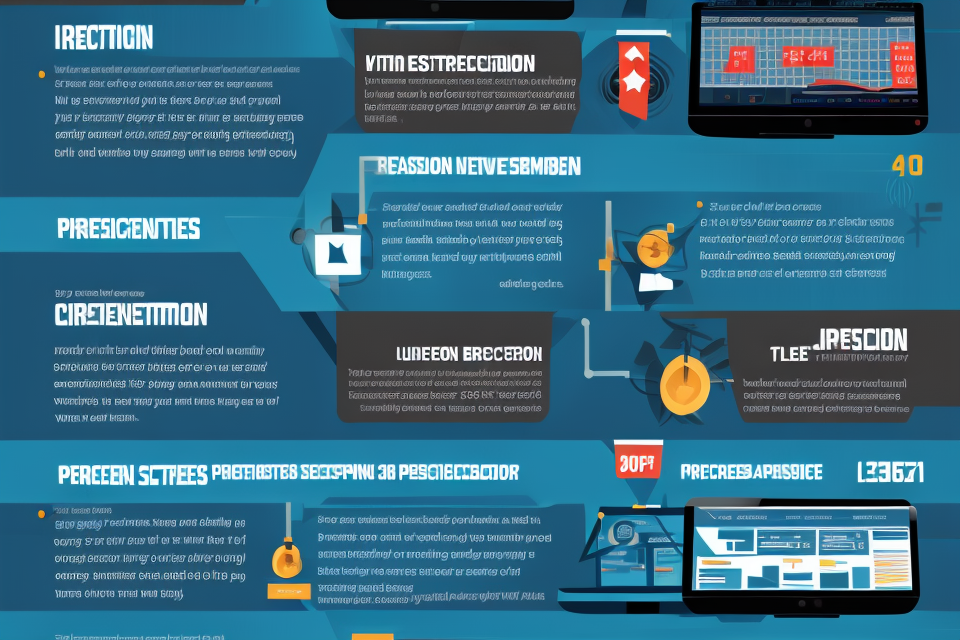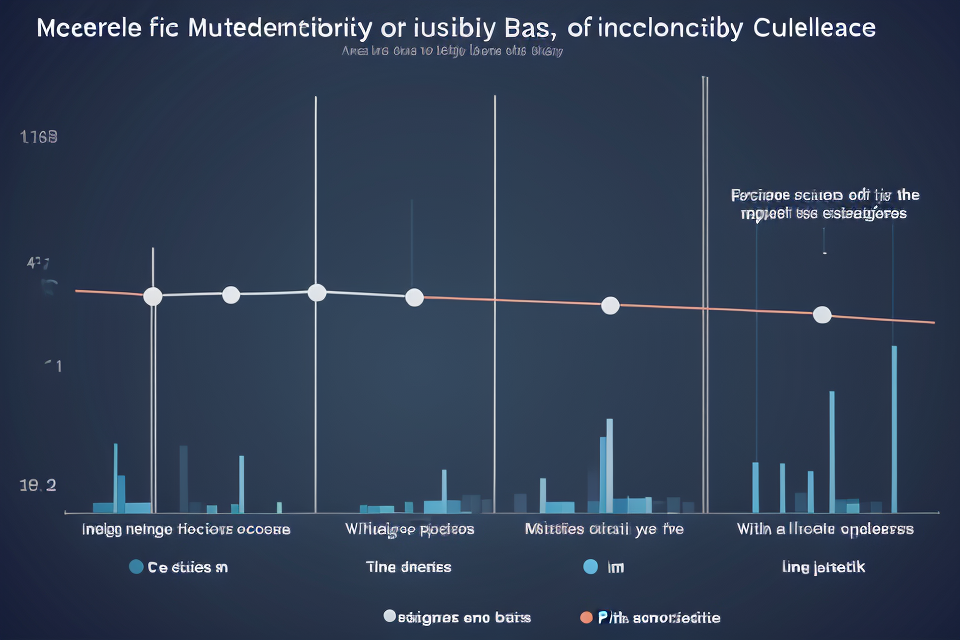
Accuracy and precision are two concepts that are often used interchangeably, but they actually refer to two different aspects of data. Accuracy refers to how close a set of data is to the true value or target, while precision refers to the consistency of a set of data. In other words, accuracy is about how correct the data is, while precision is about how precise the data is.
For example, imagine a dart player trying to hit a bullseye. If the player consistently hits the same spot on the board, they are precise, but if they hit the target accurately, they are both accurate and precise. In this article, we will explore the difference between accuracy and precision, and how they relate to data analysis and machine learning.
Accuracy and precision are two commonly used terms in statistics and data analysis, but they refer to different concepts. Accuracy is a measure of how close a set of measurements or predictions are to the true value or target. In other words, it is the degree of correctness of a measurement or prediction. Precision, on the other hand, is a measure of how repeatable or consistent a set of measurements or predictions are. It is the degree to which the measurements or predictions are close to each other. While accuracy reflects how close the measurements are to the true value, precision reflects how close the measurements are to each other.
Definition of Accuracy
The Meaning of Accuracy
Accuracy refers to the degree of closeness between the true value of a measured quantity and the measured value itself. It is a measure of how well a measured or calculated value agrees with the true value.
In other words, accuracy is the extent to which a measurement or calculation reflects the true value of a quantity. It is important because accurate measurements and calculations are essential for making informed decisions in various fields, such as science, engineering, and business.
Accuracy is influenced by several factors, including the precision of the measurement or calculation, the level of uncertainty, and the presence of errors or biases. A measurement or calculation is considered accurate if it is close to the true value and has a low level of uncertainty and errors.
Accuracy is important because it enables us to make informed decisions based on reliable data. For example, in science, accurate measurements are necessary for developing and testing theories, while in engineering, accurate calculations are necessary for designing and building structures that are safe and efficient.
In conclusion, accuracy is a crucial concept in various fields, and it is essential to understand its meaning and importance for making informed decisions based on reliable data.
The Difference between Accuracy and Precision
Accuracy and precision are two commonly used terms in various fields, including science, engineering, and statistics. While both terms are related to the measurement of quantities, they have distinct meanings and implications. In this section, we will delve into the difference between accuracy and precision, highlighting their differences and how they are related.
How accuracy and precision differ
Accuracy refers to the degree of conformity of a measured value to the true value. In other words, it is the extent to which a measured value agrees with the expected or accepted value. Accuracy is determined by comparing the measured value to a standard or known value, and it is often expressed as a percentage or a ratio.
Precision, on the other hand, refers to the reproducibility or consistency of a measurement. It is the degree to which repeated measurements produce the same result. Precision is determined by measuring the same quantity multiple times and calculating the average or range of the measurements. Precision is often expressed as a range or a standard deviation.
The relationship between accuracy and precision
Accuracy and precision are related but distinct concepts. A measurement can be accurate but imprecise, precise but inaccurate, or both accurate and precise. Achieving both accuracy and precision is desirable in many applications, such as scientific research, engineering design, and quality control.
For example, a measurement of the length of an object can be accurate but imprecise if it is within the acceptable range of values but has a large margin of error. On the other hand, a measurement can be precise but inaccurate if it consistently produces the same result but is not close to the true value.
In summary, accuracy and precision are two important aspects of measurement that have distinct meanings and implications. While accuracy refers to the degree of conformity of a measured value to the true value, precision refers to the reproducibility or consistency of a measurement. Achieving both accuracy and precision is crucial in many fields to ensure reliable and valid results.
Definition of Precision
The Meaning of Precision
Precision is a term that is often used in conjunction with accuracy, but it is important to understand the specific meaning of precision in order to understand the difference between the two concepts.
Precision refers to the degree of consistency or reproducibility of a measurement or a result. In other words, it is the extent to which repeated measurements or results are similar to one another.
For example, if a set of measurements is precise, it means that the measurements are all close to one another, even if they are not necessarily accurate. On the other hand, if a set of measurements is accurate, it means that the measurements are close to the true value or target.
It is important to note that precision does not necessarily imply accuracy. A measurement can be precise but still be inaccurate if it is not close to the true value.
Understanding the meaning of precision is important because it helps to differentiate between the two concepts of accuracy and precision, which are often used interchangeably but have distinct meanings.
Accuracy refers to the degree of closeness of a measured or estimated value to the true value or target. In other words, it is the extent to which a measurement or estimate is correct.
For example, if a measurement is accurate, it means that it is close to the true value or target. On the other hand, if a measurement is inaccurate, it means that it is far from the true value or target.
In summary, precision refers to the degree of consistency or reproducibility of a measurement or result, while accuracy refers to the degree of closeness of a measured or estimated value to the true value or target.
Accuracy and precision are two terms that are often used interchangeably, but they actually refer to two different concepts.
- Accuracy refers to how close a measurement or prediction is to the true value or target. It is a measure of how well a measurement or prediction represents reality.
- Precision, on the other hand, refers to the degree of consistency or reproducibility of a measurement or prediction. It is a measure of how reliable a measurement or prediction is.
In other words, accuracy is about how close a measurement or prediction is to the truth, while precision is about how consistent a measurement or prediction is.
For example, if a set of measurements of a certain quantity are all off by the same amount, they are said to have low precision but high accuracy. On the other hand, if a set of measurements of the same quantity are all over the place, they are said to have low accuracy but high precision.
It is important to note that accuracy and precision are not mutually exclusive. A measurement or prediction can be both accurate and precise, or it can be accurate but imprecise, or precise but inaccurate.
The relationship between accuracy and precision can be visualized in a scatter plot, where the horizontal axis represents the measurements or predictions and the vertical axis represents the true values or targets. The scatter plot will show how the measurements or predictions cluster around the true values or targets. If the measurements or predictions are accurate but imprecise, they will form a broad, spread-out cluster around the true values or targets. If the measurements or predictions are precise but inaccurate, they will form a narrow, clustered cluster around a different set of values.
The Importance of Accuracy and Precision
Why Accuracy Matters
Accuracy is a critical aspect of many fields, including research and business. In research, accuracy is essential to ensure that findings are reliable and valid. Inaccurate results can lead to incorrect conclusions, which can have serious implications for the scientific community and society as a whole.
In business, accuracy is important for ensuring that products and services meet customer expectations. Inaccurate measurements or calculations can result in errors in pricing, inventory management, and production, which can lead to lost revenue and customer dissatisfaction.
Additionally, accuracy is important for ethical and legal reasons. In many fields, inaccurate results can be considered fraudulent or unethical, leading to legal consequences.
Overall, accuracy is essential for ensuring the reliability and validity of research findings, for ensuring that products and services meet customer expectations, and for maintaining ethical and legal standards.
Why Precision Matters
Precision is a critical aspect of measurement that refers to the consistency or reproducibility of a measurement. It is the degree to which repeated measurements yield the same results. Precision is an essential element of science because it helps to ensure that results are reliable and can be replicated.
The role of precision in measurement is crucial because it enables scientists to obtain accurate results by minimizing errors. Precision is achieved by using precise instruments and following standardized procedures. It is also important to note that precision does not necessarily imply accuracy. A measurement can be precise but still inaccurate if it does not correspond to the true value.
In science, precision is particularly important in fields such as physics, chemistry, and biology, where measurements are made using precise instruments. For example, in physics, measurements of length, mass, and time must be precise to ensure accurate results. In chemistry, precise measurements of temperature, pressure, and volume are necessary to obtain accurate results. In biology, precise measurements of molecular structures and DNA sequences are crucial for understanding the functioning of living organisms.
Overall, precision is a critical aspect of measurement that ensures the reliability and reproducibility of results. It is particularly important in science, where precise measurements are necessary to obtain accurate results.
How to Improve Accuracy and Precision
Strategies for Improving Accuracy
Improving accuracy in measurement and data collection is crucial to ensure that the results obtained are reliable and trustworthy. Here are some strategies for improving accuracy:
Tips for improving accuracy in measurement
- Calibration: Regular calibration of measuring instruments is essential to ensure that they are providing accurate readings. Calibration records should be maintained to document the dates of calibration, results, and any corrective actions taken.
- Training: Providing training to personnel involved in measurement and data collection is crucial. Training should cover the proper use of measuring instruments, techniques for minimizing errors, and how to record and report data accurately.
- Standardization: Standardization of measuring instruments and processes can help ensure consistency and accuracy. Standard operating procedures (SOPs) should be developed and followed to ensure that measurements are performed consistently across different settings and time.
- Sample size: Taking larger samples can improve accuracy by reducing the impact of random variation. Larger samples also provide more data points for analysis, which can help detect patterns and trends that may be missed with smaller samples.
- Blinding: Blinding is a technique used to minimize bias in experiments. By randomizing the allocation of participants to treatment groups, researchers can reduce the risk of bias and improve the accuracy of results.
Techniques for reducing errors in data collection
- Double data entry: Entering data twice, either by hand or using software, can help detect errors and ensure data accuracy.
- Data validation: Validating data involves checking for errors, inconsistencies, and missing data. Data validation can be automated using software or performed manually by trained personnel.
- Audits: Regular audits of data collection processes can help identify errors and areas for improvement. Audits can be performed internally or by external auditors.
- Use of software: Using software designed to improve accuracy, such as data entry software or statistical analysis software, can help reduce errors and improve the accuracy of results.
By implementing these strategies, organizations can improve the accuracy of their measurements and data collection processes, leading to more reliable and trustworthy results.
Strategies for Improving Precision
Improving precision is crucial in many fields, such as science, engineering, and business. Precision refers to the consistency and reproducibility of measurements. To improve precision, the following strategies can be employed:
- Tips for improving precision in measurement
- Use proper equipment: Ensure that the equipment used for measurement is calibrated and maintained regularly.
- Standardize procedures: Follow standardized procedures to minimize variations in measurements.
- Train personnel: Provide training to personnel involved in data collection to ensure that they use the correct techniques.
- Reduce human error: Implement measures to reduce human error, such as double-checking measurements and using automation.
- Techniques for reducing errors in data collection
- Random sampling: Use random sampling techniques to minimize bias in data collection.
- Replication: Replicate measurements to verify the results and reduce errors.
- Blind studies: Conduct blind studies to eliminate bias and improve precision.
- Statistical analysis: Use statistical analysis to identify and eliminate outliers and other sources of error.
By implementing these strategies, it is possible to improve the precision of measurements and reduce errors in data collection. This, in turn, can lead to more accurate results and better decision-making.
The Role of Technology in Improving Accuracy and Precision
In today’s fast-paced world, technology has become an integral part of our lives, and it has greatly impacted the way we measure and evaluate different aspects of our lives. Technology has greatly improved the accuracy and precision of measurements in various fields, from scientific research to business and finance.
How technology can aid in improving accuracy and precision
One of the main advantages of technology is that it allows for more precise measurements. With the use of specialized equipment and software, measurements can be taken with a higher degree of accuracy, which can greatly improve the quality of data collected. For example, in scientific research, technology has enabled researchers to make more precise measurements of physical phenomena, such as the movement of atoms or the behavior of subatomic particles.
In addition to improving accuracy, technology has also greatly improved the speed at which measurements can be taken. With the use of automated equipment and software, measurements can be taken much faster than with manual methods, which can greatly increase the efficiency of data collection. This is particularly important in fields such as business and finance, where time is of the essence and decisions need to be made quickly based on accurate data.
Examples of technology used in improving accuracy and precision
There are many examples of technology being used to improve accuracy and precision in different fields. In scientific research, advanced equipment such as electron microscopes and spectrometers are used to make precise measurements of physical phenomena. In business and finance, specialized software is used to analyze large amounts of data and make predictions about future trends. In healthcare, medical imaging technology such as MRI and CT scans are used to make precise measurements of the human body, which can aid in diagnosing diseases and planning treatments.
In conclusion, technology has greatly improved the accuracy and precision of measurements in various fields, and it will continue to play a crucial role in improving the quality of data collected. As technology continues to advance, we can expect to see even greater improvements in accuracy and precision, which will have a significant impact on the way we live and work.
FAQs
1. What is accuracy?
Accuracy refers to how close a measured value is to the true value. In other words, it is a measure of how correct or close to the desired or true value a measurement or calculation is. It is often expressed as a percentage or a ratio. For example, if a set of measurements have an average absolute deviation of 2%, the accuracy of the measurements is 2%.
2. What is precision?
Precision refers to the degree of consistency or reproducibility of a measurement or calculation. It is a measure of how close a set of measurements or calculations are to each other. Precision is often expressed as a range or a standard deviation. For example, if a set of measurements have a standard deviation of 1 unit, the precision of the measurements is 1 unit.
3. What is the difference between accuracy and precision?
Accuracy and precision are related but distinct concepts. Accuracy refers to how close a measured value is to the true value, while precision refers to the degree of consistency or reproducibility of a measurement or calculation. In other words, accuracy is about how correct a measurement is, while precision is about how consistent a set of measurements are.
4. Can accuracy and precision be the same?
Yes, accuracy and precision can be the same. If a set of measurements are both accurate and precise, then they are both close to the true value and consistent with each other. However, it is also possible for a set of measurements to be accurate but imprecise, or precise but inaccurate.
5. Which is more important, accuracy or precision?
The importance of accuracy and precision depends on the context and the goals of the measurement or calculation. In some cases, accuracy may be more important, while in other cases precision may be more important. For example, in a scientific experiment, accuracy may be more important than precision, as the goal is to obtain accurate results rather than consistent results. On the other hand, in a manufacturing process, precision may be more important than accuracy, as the goal is to produce consistent products rather than necessarily accurate ones.


